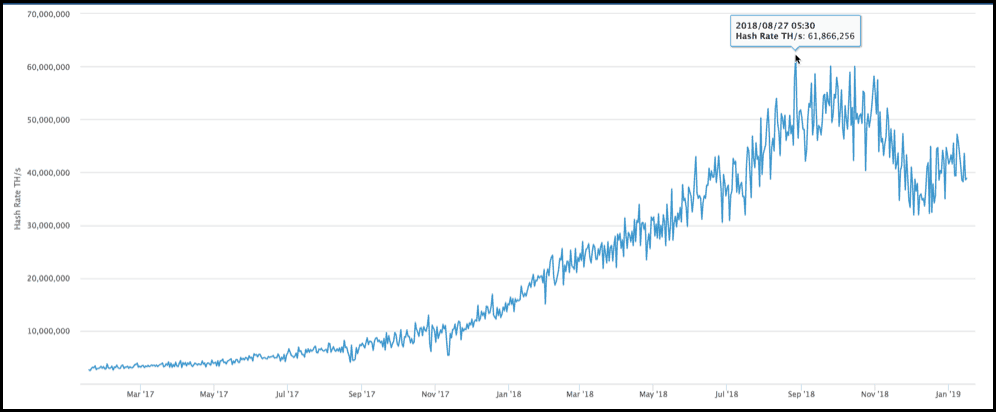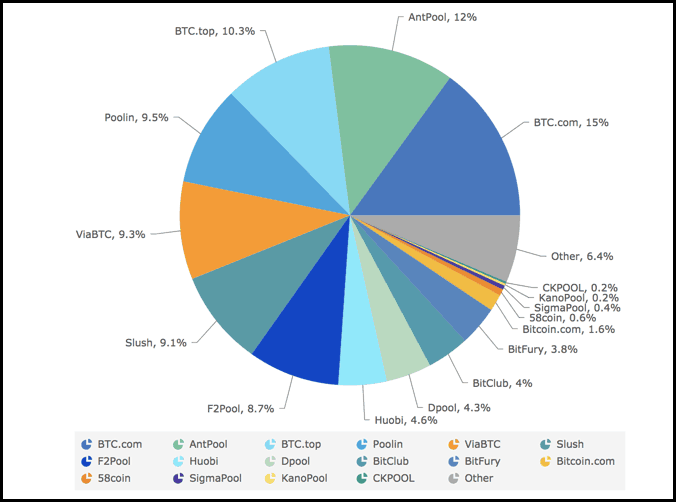Bitcoin Hash Rate In Cryptocurrencies Explained

Bitcoin’s hash rate or hashing power has come down !!
This is what you will hear quite often in the cryptosphere.
But have you ever wondered what is the hash rate or hash power?
I believe, No, you haven’t.
But if you are serious about Bitcoin or cryptocurrencies, you must make an effort to understand this concept of ‘hash-rate’ because this what makes Bitcoin or any other cryptocurrency safe.
Moreover, this concept of hash rate is very important for proof of work cryptocurrencies, and Bitcoin is proof of work currency.
So let’s dive into this concept and understand how it affects the Bitcoin network:
What Is Hash Rate or Hash Power In Bitcoin?
I am taking Bitcoin cryptocurrency as an example here because its the most popular one and many would be able to relate to it.
If you remember from my previous article on Bitcoin hash, we have talked about the concept of hashes. And we have concluded there that these hashes are nothing but cryptographic digests of the SHA-256 algorithm in Bitcoin.
In the light of this, if I were to define hash rate simply, this would be the apt definition:
The ‘hash rate’ or ‘has power’ is the measuring unit of the processing power of the Bitcoin network to calculate Bitcoin hashes.
Bitcoin mining utilizes Bitcoin hashes generated through SHA-256 function at various steps of mining.
While mining the miners needs to hash the block header in such a way that it is always equal or less than the ‘Target hash’ because only then they can add successfully add their mined block to the blockchain.
The target at the time writing should be an alphanumeric number which must have 18 or more zeros and should be less than the target value. And the target changes every 2016 blocks.
Miners arrive at this hash by applying SHA-256 hash function to block header, but this process is not so simple as it looks. To obtain the acceptable hash, miners need to play with the ‘nonce‘ in an incremental way.
Since this is a hit and miss exercise, hence chances are very less that one might obtain the required hash (Target) with a particular number of leading zeros without making many attempts. And this Target is what is called a ‘Bitcoin Hash’
That’s why miners repeat this mathematical guessing work numerous times that too at a rapid speed because they are always in competition with other miners and their mining equipment.
And this requires an enormous amount of computational power and sophisticated hardware equipment which makes it energy as well cost-intensive process. And this is what is called ‘proof of work.’
Later, when a miner finds out the required kind of hash, he/she will be able to add the block to the blockchain and hence win the lottery or block reward of 12.5 BTC.
So, it can be said that the hashing power is the power that your computer or hardware uses to run different cryptographic hashing algorithms to generate hashes while mining any cryptocurrency, and in this case, Bitcoin.
But now the main question that should arise is, how do we get to know whether the hash rate is decreased or increased?
Well, common sense says, it can be determined only when hash power or hash rate measured in some units and this brings just to our next section ‘Unit of Hash Rate’
How Is The Hash Rate Measured & its Unit?
Just as we learned that Bitcoin mining is an intensive process that allows miners to add blocks to the blockchain and hence preventing spam and keeping it secure.
And how does it becomes secure?
Well, it becomes secure because every time someone wants to add a transaction or block to the blockchain, he/she must first make many iterations to be able to find the correct Bitcoin hash.
And that’s why not everyone can afford to do this huge upfront investment that Bitcoin mining requires for finding hashes.
So when we hear the hash rate of Bitcoin has reached 10 Th/s, it means one has to make 10 trillion calculations per second for 10 minutes to be able to find a correct Bitcoin hash.
And that’s how the hashrate’s unit was born.
Hash rate or hashing power is measured in hashes per second [h/s] and here are some of the common denominations used to measure higher hash rates:
Hash Rate Denominations
- 1 KH/s = 1,000 (one thousand) hashes per second
- 1 MH/s = 1,000,000 (one million) hashes per second
- 1 GH/s = 1,000,000,000 (one billion) hashes per second
- 1 TH/s = 1,000,000,000,000 (one trillion) hashes per second
- 1 PH/s = 1,000,000,000,000,000 (one quadrillion) hashes per second
- 1 EH/s = 1,000,000,000,000,000,000 (one quintillion) hashes per second
Common Hash Rate Conversions
- 1 MH/s = 1,000 kH/s
- 1 GH/s = 1,000 MH/s = 1,000,000 kH/s
- 1 TH/s = 1,000 GH/s = 1,000,000 MH/s = 1,000,000,000 kH/s
Realtionship Between Bitcoin hashrate, Difficulty, & Miner’s Profit, Network Usage
Hash Rate, difficulty, network usage and miner’s profit are highly correlated.
Because as the hash rate increases the difficulty of mining a block on the network increases in hashes per second. C
Consequently, now the network requires more miners or equipment to provide that differential hash power which is now required to mine the blocks so that 10 minutes average block time can be maintained.
And this increases the miners joining the network which in turn competes with each other for the 12.5 BTC block reward and also the block mining fee i.e. the transaction fee combined for all the transactions in the block.
On the other hand, as the network usage increases i.e. more transactions happening on the blockchain, means there is less space for every transaction in a block.
And in this case, the space in the block becomes premium thus pushing the transaction fee more, which acts as a more incentivized deal for the miners to come and do the mining.
Right now this is the hash rate for Bitcoin:
At the time of writing, Bitcoin’s hashrate has come down to 38 million TH/s down from its all-time high of 61 million TH/s last year.
Lastly, I would like to bust another myth of centralized hash power which is actually not the case if you have look at the current hash rate or hash power distribution of Bitcoin mining:
So that’s all from TheMoneyMongers today and untill you find out how to become a miner, let’s continue learning about the great Bitcoin revolution together.
Like Bitcoin? Do share this post on Twitter & Facebook as that’s the easiest way you can help Bitcoin grow !!
- Bitcoin Transaction Accelerator: 5 Services to Unstuck Your BTC - September 23, 2023
- What Is Bitcoin Private Key? Everything You Need To Know !! - June 2, 2023
- Best Cardano (ADA) Wallets To Use In 2024 - May 7, 2023
Contents



